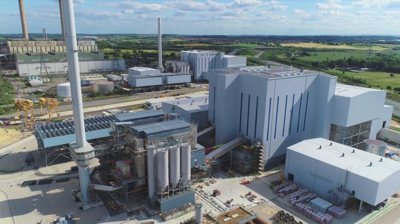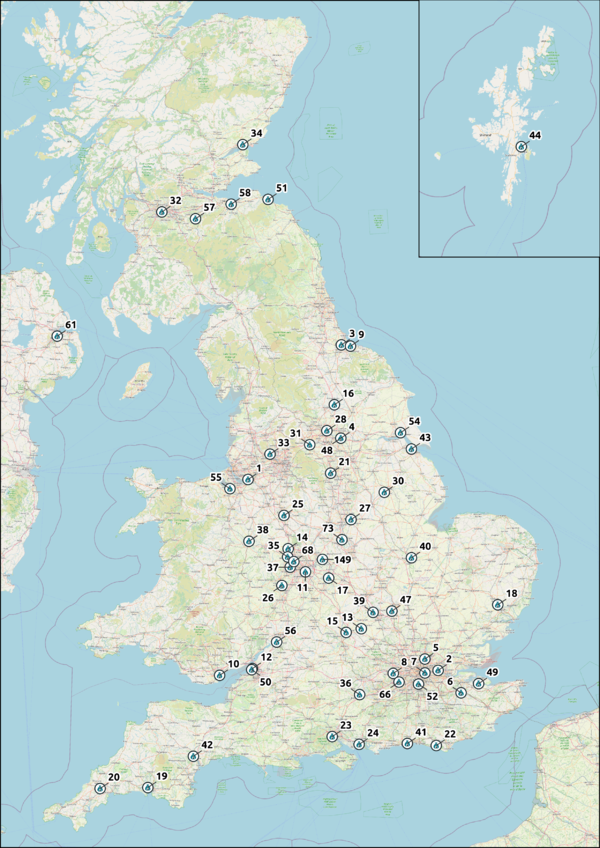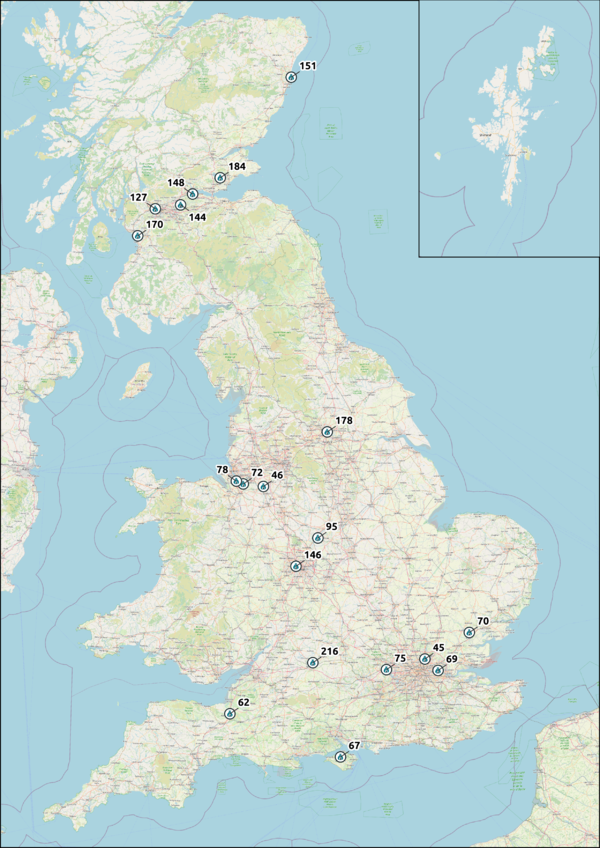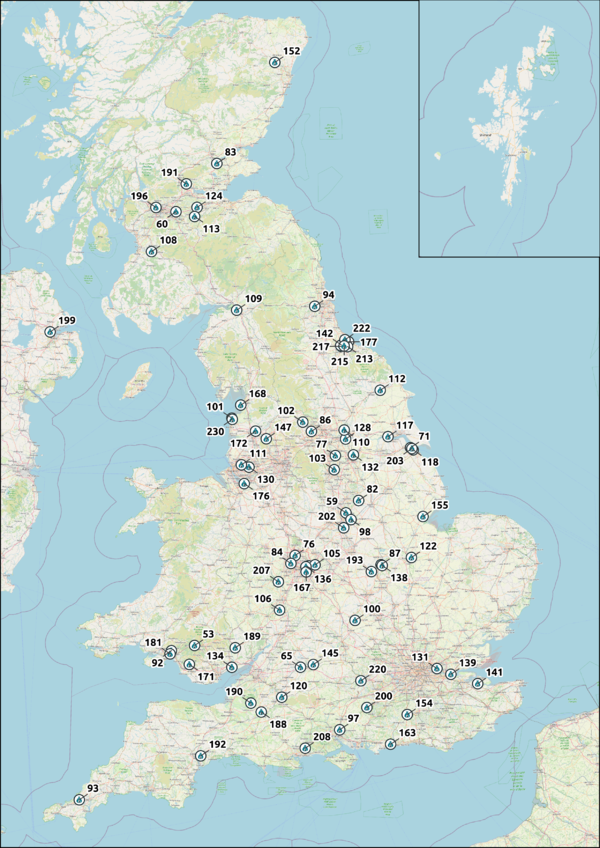Residual Waste EFW: Difference between revisions
No edit summary |
No edit summary |
||
| Line 46: | Line 46: | ||
Historically, the UK has been very dependent on [[Landfill]] or [[Incineration without Energy Recovery]] for [[Disposal]] of [[Residual Waste]]. The landfill diversion targets set in the mid 1990s promoted [[EfW]] developments. The diversion of residual waste away from [[Landfill]] and into [[EfW]] processes was intended to reduce emissions of methane and pollution originating from [[Landfill]] sites and increase production of renewable energy<ref name="foo" />. [[Energy from Waste]] is the now the main method for dealing with [[Residual Waste]], with [[Landfill]] of [[Residual Waste]] being the least preferred method, as outlined in the [[Waste Hierarchy]]<ref name="foo" />. | Historically, the UK has been very dependent on [[Landfill]] or [[Incineration without Energy Recovery]] for [[Disposal]] of [[Residual Waste]]. The landfill diversion targets set in the mid 1990s promoted [[EfW]] developments. The diversion of residual waste away from [[Landfill]] and into [[EfW]] processes was intended to reduce emissions of methane and pollution originating from [[Landfill]] sites and increase production of renewable energy<ref name="foo" />. [[Energy from Waste]] is the now the main method for dealing with [[Residual Waste]], with [[Landfill]] of [[Residual Waste]] being the least preferred method, as outlined in the [[Waste Hierarchy]]<ref name="foo" />. | ||
In | In 2024, the amount of residual waste that was sent to [[EfW]] processes in the UK increased by 4.3%, amounting to a total of 16.8 kt being sent to 63 operational EfW facilities across the UK<ref name="foo2> [https://www.tolvik.com/published-reports/view/uk-energy-from-waste-statistics-2023// Derived from Tolvik EFW Statistics 2024, Published April 2025]</ref>. This was against a headline/plated capacity of 19.34 kt of operational capacity and a further 4.85 kt of late stage commissioning and in construction 'plated' capacity at that time. This represented 74.4% of [[Local Authority Collected Waste]] with the balance from [[Commercial and Industrial Waste]]<ref name="foo2" />. The total net power exported from [[EfW]] facilities in 2024 was 10,040 GWh, this supplied 3.6% of the total UK power generation, and gives an average of 600 kWh of power generated per tonne of residual waste treated at UK [[EfW]] facilities<ref name="foo2" />. | ||
| | ||
The graph below displays how the tonnage of residual waste processes by UK [[EfW]] facilities has changed over recent years, and is based on that received rather than the 'plated' capacity of the plants in operation and construction (24.16 kt reported by Tolvik<ref name="foo2" /> at the end of 2024, whereas this page reports '''{{formatnum: {{#expr: {{#var: opston}} + {{#var: ucston}}}}}} kt''' as at March 2021). | The graph below displays how the tonnage of residual waste processes by UK [[EfW]] facilities has changed over recent years, and is based on that received rather than the 'plated' capacity of the plants in operation and construction (24.16 kt reported by Tolvik<ref name="foo2" /> at the end of 2024, whereas this page reports '''{{formatnum: {{#expr: {{#var: opston}} + {{#var: ucston}}}}}} kt''' as at March 2021). | ||
Latest revision as of 18:28, 16 April 2025
Residual Waste can be used as a feedstock for Energy from Waste (EfW) facilities and Residual Waste is considered as partially renewable or a low carbon energy source as a result of the energy produced from the fraction of Residual Waste derived from Biomass that is considered renewable[1]. This page reports that as at March 2021 Residual Waste EFW operational 'plated capacity' was 19,410 kt and in construction 'plated capacity' of 7,218 kt, a total of 26,628 kt which is around 75% of Residual Waste suitable for Energy from Waste.

Operational EfW
The following list summarises all EfW sites that were operational as of March 2022, with limited summary information in the table. More detailed information can be found by clicking through to the site-specific page, the total 'plated capacity' is 19,410 kt:

Technology: EfW - EfW Incineration; ACT - Advanced Conversion Technology; WtF - Waste to Fuel.
Summary site information is collated from a variety of sources including: Monksleigh[2], Tolvik[3], EA, SEPA, NRW, DEFRA, BEIS, UKWIN and owner and developer websites.
- ID item 3 has multiple line entries - the capacity of all entries is shown in one line.
- ID item 29 Sinfin Lane has been removed from the operational sites as is reported as presently mothballed.
- ID item 64 Ratty's Lane Sustainable Energy Facility (ACT), also known as Hoddesdon, was reported in January 2022 that it would be moving into a mothballed status imminently[4].
The map, to the right of the listing, contains the locations of all the sites listed above - please note that due to scale and cartographic limitations some of the numbers in the list might not be shown on the map due to sites being in close proximity, or sites in areas of high density. This does not mean that the site marker is not there. An example of this is Ferrybridge Multifuel 1 (FM1) and Ferrybridge Multifuel 2 (FM2) as both are in geographically similar locations, being a few 100m apart, and as a result the location markers will appear on top of each other, and as a result one will block the other's numerical id. This also applies to the following maps on sites in construction and planning.
Growth in Residual Waste EfW
Historically, the UK has been very dependent on Landfill or Incineration without Energy Recovery for Disposal of Residual Waste. The landfill diversion targets set in the mid 1990s promoted EfW developments. The diversion of residual waste away from Landfill and into EfW processes was intended to reduce emissions of methane and pollution originating from Landfill sites and increase production of renewable energy[1]. Energy from Waste is the now the main method for dealing with Residual Waste, with Landfill of Residual Waste being the least preferred method, as outlined in the Waste Hierarchy[1].
In 2024, the amount of residual waste that was sent to EfW processes in the UK increased by 4.3%, amounting to a total of 16.8 kt being sent to 63 operational EfW facilities across the UK[5]. This was against a headline/plated capacity of 19.34 kt of operational capacity and a further 4.85 kt of late stage commissioning and in construction 'plated' capacity at that time. This represented 74.4% of Local Authority Collected Waste with the balance from Commercial and Industrial Waste[5]. The total net power exported from EfW facilities in 2024 was 10,040 GWh, this supplied 3.6% of the total UK power generation, and gives an average of 600 kWh of power generated per tonne of residual waste treated at UK EfW facilities[5]. The graph below displays how the tonnage of residual waste processes by UK EfW facilities has changed over recent years, and is based on that received rather than the 'plated' capacity of the plants in operation and construction (24.16 kt reported by Tolvik[5] at the end of 2024, whereas this page reports 26,628 kt as at March 2021).
 |
| Year | 2006 | 2007 | 2008 | 2009 | 2010 | 2011 | 2012 | 2013 | 2014 | 2015 | 2016 | 2017 | 2018 | 2019 | 2020 | 2021 | 2022 | 2023 | 2024 |
| Million Tonnes | 3.3 | 3.3 | 3.3 | 3.6 | 4.2 | 4.8 | 5.2 | 5.5 | 6.7 | 8.4 | 10.1 | 10.9 | 11.5 | 12.6 | 14.1 | 14.9 | 15.3 | 16.1 | 16.8 |
The table below shows the power and heat generation from residual waste EfW facilities in the UK between 2014-2024.[5]
| Year | 2014 | 2015 | 2016 | 2017 | 2018 | 2019 | 2020 | 2021 | 2022 | 2023 | |
| Net Power Export (GWhe) | 3,368 | 4,636 | 5,291 | 6,258 | 6,230 | 6,703 | 7,769 | 8,643 | 9,428 | 9,676 | 10,040 |
| Net Heat Export (GWhth) | NA | 554 | 730 | 865 | 1,112 | 1,384 | 1,651 | 1,845 | 1,770 | 1,777 | 1,949 |
England produced 12,500 kt of Residual Waste from Households in 2016[6], and it is estimated that there will be an increase in EfW capacity for Residual Waste by 2,000 kt/year by 2022 [7] but this is substantially lower than the plated capacity reported on this page.
With the increasing social, economic and political drive to Prevent, Reuse and Recycling more waste, in line with the Waste Hierarchy and the Circular Economy the amount of Residual Waste is expected to decrease in the medium to long term[1]. The exact magnitude of this reduction and the Residual Waste continuing to need to be delivered to EfW has been debated at length by different commentators over the last few years.
Under Construction EfW
The following list summarises all EfW sites that were under construction in March 2022, with limited summary information in the table and more detailed information by clicking through to the site-specific page . Historically there have been some plants that have not passed from construction to operation due to commissioning issues and are not listed i.e. Air Products. Several of the plants listed below that are presently in extended commissioning are based on Gasification technologies, but no comment is made as to whether they will reach full operational capacity. The total 'plated capacity' is 7,218 kt.

| ID | Site Name | Technology | Capacity (kt)
|
|---|---|---|---|
| 45. | North London Heat and Power (Edmonton EcoPark Replacement) | EfW | 700 |
| 46. | Lostock Sustainable Energy Plant | EfW | 600 |
| 62. | Showground Road | EfW | 105 |
| 69. | Riverside Energy Park (REP) | EfW | 650 |
| 70. | Rivenhall EFW | EfW | 595 |
| 72. | Protos EFW | EfW | 500 |
| 75. | Slough Multifuel EFW | EfW | 480 |
| 76. | Walsall Energy Recovery Facility | EfW | 478 |
| 83. | Binn Eco Park EFW | EfW | 85 |
| 95. | Drakelow Renewable Energy Centre | ACT | 169 |
| 127. | South Clyde Energy Centre, Bogmoor Road, Glasgow | EfW | 385 |
| 139. | Thameside Energy Recovery Facility | EfW | 350 |
| 144. | Drumgray Energy Recovery Centre (DERC) | EfW | 300 |
| 146. | Kelvin Energy Recovery Facility | EfW | 400 |
| 150. | Medworth EFW CHP | EfW | 626 |
| 170. | Oldhall EfW Plant | EfW | 180 |
| 178. | Skelton Grange EfW Plant | EfW | 435 |
| 216. | Advanced Biofuel Solutions | WtF | 8 |
| 235. | Boston Energy Production Facility | ACT | 86 |
| 236. | Hull Energy Production Facility | ACT | 86 |
Technology: EfW - EfW Incineration; ACT - Advanced Conversion Technology; WtF - Waste to Fuel.
Summary site information collated from a variety of sources including: Monksleigh[2], Tolvik[3], EA, SEPA, NRW, DEFRA, BEIS, UKWIN and owner and developer websites
- ID item 46 was reported in January 2022 as affected by the financial troubles being experienced by CNIM Environment & Energy EPC and after the business 'financially collapsed' it was reported as being taken on by Black and Veach[8]
- ID item 78 was previously reported as operational, but despite the submission of an annual report for 2022 it is understood to not be fully handed over.
- ID item 148 has also hit delays as a result of the failure of CNIM Environment & Energy EPC but is now reported as close to operational[9].
- ID 205 was understood to have gone into administration in May 2023 and at the time of writing it is unclear if it will progress to completion.
In Planning EfW
The following list summarises all EfW sites that were in the planning process as at March 2021, which comprises those that have received planning permission at some point and those that are presently in the consultation process seeking planning permission. The total 'plated capacity' shown in the tables below is 20,799 kt (Planning: 18,021 kt, Consultation: 2,778 kt).
In addition there are some plants below which have been reported as commencing construction, but this only applied to initial works or the construction of adjacent infrastructure, and not the EfW element of the project. The sites that fall into this category (i.e. the EfW is not thought to be under construction) in the list below include ID numbers 53, 59, 60, 63, 65, and 68.
No comment or note is made on those plants whose planning consent may have expired due to not being implemented within consented time limits, or the likelihood of them moving from this stage into construction, noting that the 'plated capacity' far exceeds the reported Residual Waste available to support them in the UK.

In Planning
Technology: EfW - EfW Incineration; ACT - Advanced Conversion Technology; WtF - Waste to Fuel.
In Consultation
| ID | Site Name | Technology | Capacity (kt)
|
|---|---|---|---|
| 63. | Canford | EfW | 260 |
| 206. | Archers Fields Energy Recovery Facility | EfW | 150 |
| 209. | Portland EFW | unkown | 183 |
| 210. | Mossdown Road ERF | EfW | 250 |
| 211. | Deeside RDF Fuel Project | ACT | 200 |
| 212. | PD Ports, Teeside | unkown | 300 |
| 214. | Century Road, Saltend, Hull | EfW | 320 |
| 218. | PD Ports, Teeside | unkown | 250 |
| 223. | Consett ERF | EfW | 60 |
| 226. | Connect Waste (Chequers Lane) | EfW | 75 |
| 227. | North Lincolnshire Green Energy Park | EfW | 650 |
| 228. | Green Energy Hub | EfW | 80 |
Technology: EfW - EfW Incineration; ACT - Advanced Conversion Technology; WtF - Waste to Fuel.
Summary site information collated from a variety of sources including: Monksleigh[2], Tolvik[3], EA, SEPA, NRW, DEFRA, BEIS, UKWIN and owner and developer websites
References
- ↑ 1.0 1.1 1.2 1.3 Defra, 2014. Energy from Waste: A guide to the debate February 2014 (revised edition). London.
- ↑ 2.0 2.1 2.2 Monksleigh Ltd
- ↑ 3.0 3.1 3.2 Tolvik
- ↑ ENDS Article 31st January 2022
- ↑ 5.0 5.1 5.2 5.3 5.4 5.5 Derived from Tolvik EFW Statistics 2024, Published April 2025
- ↑ DEFRA UK Statistics on Waste 2020
- ↑ Tolvik Consulting, 2017. UK Residual Waste: 2030 Market Review. Environmental Services Association.
- ↑ Black and Veach News Item January 2023
- ↑ ENDS Article April 2023
